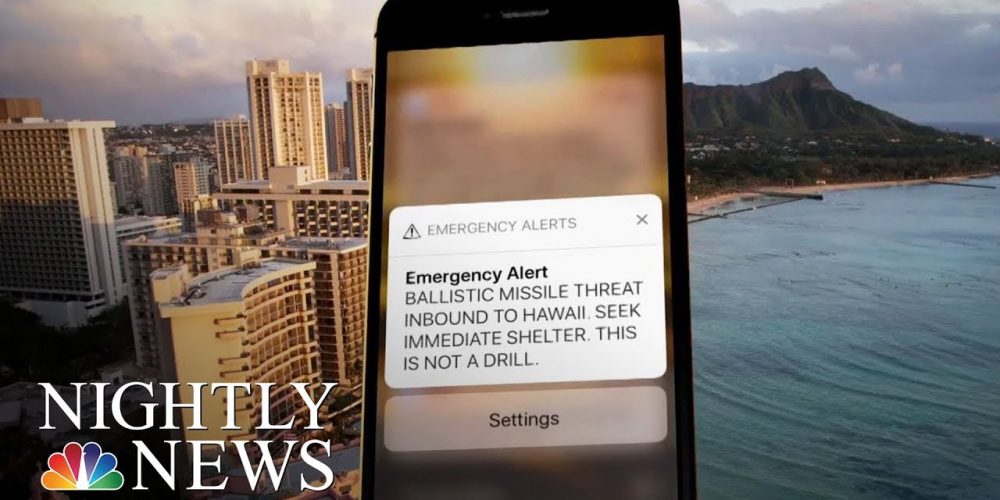On Saturday, at 8:07 a.m., more than a million mobile phones in Hawaii received an emergency notification, warning citizens about an imminent missile attack. Although there was no incoming missile and state officials canceled the alert only six minutes later, it took them nearly 38 minutes to send a new mobile phone message informing the public that the first notification was issued in error.
Between the time when the initial cellphone alert was sent and the correction was issued, people throughout the state were scrambling for cover, fearing a nuclear attack was just about to happen. Honolulu’s 911 system received 5,500 calls, reports CBS News.
On Tuesday, Japan experienced a similar false alarm. The country’s public broadcaster mistakenly sent an alert warning its citizens of a North Korean missile launch, only to issue a correction minutes later, reports ABC News.
In the Hawaiian case, human error was to blame. During a routine test of the emergency warning system, an employee selected the wrong option on a drop-down menu that was confusing, reports the Washington Post. The staff member realized after two or three minutes that he made a mistake. (In response to the false alarm, Hawaii has stopped conducting those tests, pending a full review of the system. The employee who made the error has also been reassigned to another position.)

Automating AV systems is a great way to increase efficiency by saving time and lowering costs. Your technically challenged staff will love you for it. Download our FREE guide for some great buying tips!
The Technology Manager’s Guide: Tips for Buying Control and Automation TechnologyI’m certain that right now, campus emergency managers, other public safety officials and administrators are thanking their lucky stars that they don’t work for Hawaii’s or Japan’s offices of emergency management. But for the Grace of God go they.
What happened in Hawaii last weekend highlights the need for emergency notification systems to have the ability to send multiple messages quickly, such as follow-up messages when an initial alert is sent in error. In Hawaii’s case, the state didn’t have procedures for issuing corrections. (It does now.)
Additionally, it highlights the importance of having multiple modes of communication that can be quickly mobilized to address threats, issue all-clears and correct false alarms.
Furthermore, the Hawaiian false alarm fiasco demonstrates the need for adequate training of users of the emergency notification system and to make that system easy to use. On many campuses, there usually are one or two individuals who are well trained on their institution’s or district’s mass notification system, and if an emergency happens while they are working, things go well. But how will the second or third shifts perform when an emergency happens at 3 a.m. or during spring break or summer vacation? Do those employees know how to properly operate your mass notification system and do they understand the policies and procedures supporting it?
What happened in Hawaii and Japan this week is truly unfortunate. The good news is that they were both false alarms, and in Hawaii’s case at least, showed that the system worked and that the false alarm that was issued was done so by mistake. I have a whole lot of compassion for the errant emergency management employee in Hawaii, and I can understand how he could have been confused by the drop-down menu.
That being said, institutions of higher education, K-12 schools and districts and hospitals must learn from these errors so that when a crisis happens to their campus, the right messages will be delivered to the right people quickly and effectively.
This article was originally posted on TD sister site Campus Safety.
If you enjoyed this article and want to receive more valuable industry content like this, click here to sign up for our digital newsletters!










Leave a Reply